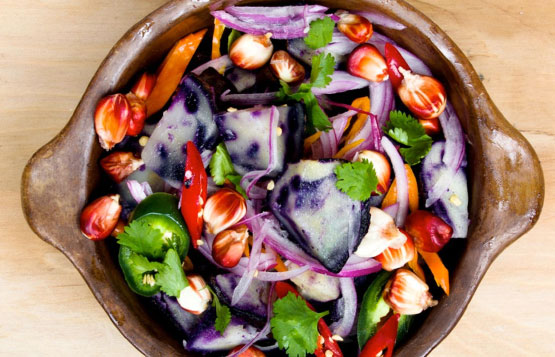
Six shifts to boost your vegetable intake, from The Portland Clinic dietitians.
The Dietary Guidelines for Americans recommend making shifts to substitute more-nutritious foods for less-healthy choices. One key shift is to choose more non-starchy vegetables in place of foods that are high in calories and saturated fats. Making this shift could reduce your risk of obesity, diabetes, heart disease, cancer and other ills. You know it, but the question is, how to do it? We offer six simple shifts to help you finally get serious about your veggies. To see the Dietary Guidelines, click here.
1. Shift your mindset
Place a 2-cup measuring cup at the center of your kitchen counter every morning. That’s the minimum amount of vegetables you should eat every day. A visual reminder helps you make veggies a priority rather than an afterthought. Many people take it even further, measuring their vegetables at each meal and checking off each half-cup on a chart to make sure they meet (or better, beat) their minimum. If you need extra reinforcement, give it a try. Once 2 cups is a habit, go for 3 or 4.
2. Shift your timing
Don’t wait until dinner to think about vegetables — by then, it’s hard to catch up on your 2-4 cups. Shift to including vegetables earlier in the day. Try an egg scramble loaded with mushrooms, peppers, any leftover veggies and some chunky salsa for breakfast; a taco piled with cabbage, avocado and cucumber for lunch, and a hot vegetable and cool salad with dinner.
3. Shift “convenience” foods
If you have time to microwave a frozen meal, you have time to poke a couple of holes in a bag of pre-chopped broccoli and microwave it. Look more closely in the produce section — veggies are getting more and more convenient.
4. Shift cooking methods
Are there certain vegetables that you never liked? Maybe the problem was the way they were cooked, and not the veggies themselves. Give your “dislike” list another try, and cook them the way you like. Roasting makes everything sweeter. Steaming takes just a few minutes for crisp-tender (not mushy) results. A squirt of lemon adds a zesty finish. You might surprise yourself.
5. Shift out of your rut
Greens are good, we know, but so are reds, oranges, yellows and purples. If your plate is always the same color, shift to shopping for vegetables in every color of the rainbow. Variety isn’t only the spice of life — it’s also the key to covering all the nutrient bases.
6. Shift your snacks to veggies
Veggies instead of chips? Absolutely. Buy a week’s worth of your favorite pre-chopped veggies (or pre-chop your own), whip up one of the dips listed below, and voila — veggie “chips” and dip whenever the urge for a crunchy snack strikes.
THE PERFECT 100-CALORIE SNACK
Vegetables are packed with essential nutrients that our bodies crave for good health. Yet most of us struggle to get our 2 cups (minimum) daily. Maybe it’s time we shifted our thinking about veggies from a “should” to a “want.” Here’s one easy way: Trade in your chips for veggies and dip. A cup of raw veggies (your choice) and a serving of either of these dips delivers a tasty, crunchy snack, half your daily veggies, oodles of nutrients and just 100 calories. Chips just can’t compete.
CREAMY GARLIC-HERB DIP
- 1/2 cup (4 ounces) 1/3-less-fat cream cheese
- 1/4 cup buttermilk
- 2 tablespoons minced fresh chives
- 1 tablespoon minced fresh parsley
- 1 teaspoon grated lemon rind
- 1/4 teaspoon salt
- 1/8 teaspoon freshly ground black pepper
- 1 small garlic clove, minced
Blend everything with a mixer or food processor until smooth. Per 2-tablespoon serving: 55 calories, 4.4 g fat (2.9 g sat fat), 2.5 g protein, 1.5 g carbs, 195 mg sodium.
SMOKED SALMON DIP
- 1 (8-ounce) tub light cream cheese
- 2 tablespoons chopped fresh dill
- 1 tablespoon fresh lemon juice
- 4 ounces smoked salmon, chopped, divided
Blend everything but half the salmon in a food processor until smooth. Fold in remaining salmon. Per 2-tablespoon serving: 56 calories, 3.5 g fat (2.1 g sat fat), 4 g protein, 1.4 g carbs, 89 mg sodium. Recipes from Cooking Light. Dips keep up to a week in the fridge.


